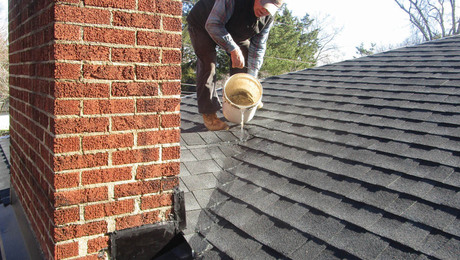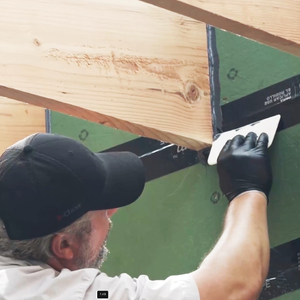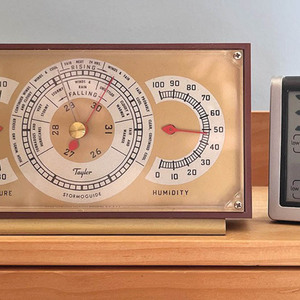Does anyone have any experience with wood that has been affected by fire, but not destroyed?
A previous customer’s house was largely destroyed by fire, but not the cedar deck, although it was very close to the heat and the flames. A few embers on the deck, 1/16″ of char over maybe 80 sqft, one railing post, a portion charred 1/4″ deep. All seems to be structurally sound, but has any of the cedar’s natural weather resistance been boiled away?
Both the customer and myself would prefer not to waste the natural resource, and consider the discoloration, after the black is scraped away, to help tell the history of the house. But will we be replacing that post and the affected decking years earlier than normal(all is four years old)because the wood’s natural weather resistance has been somehow reduced by proximity to fire?
Discussion Forum
Discussion Forum
Up Next
Video Shorts
Featured Story

Easy-to-make tools simplify the framing, while time-tested flashing techniques make it last a lifetime.
Featured Video
How to Install Cable Rail Around Wood-Post CornersHighlights
"I have learned so much thanks to the searchable articles on the FHB website. I can confidently say that I expect to be a life-long subscriber." - M.K.

















Replies
bump
The next level is here.... Turning.
My experience sez,
You will spend more time salvaging this than it's worth, and..........
when it turns to sheet later your customer will forget who's money you were trying to save, and.........
it will be your fault for recommending salvage rather than replacement.
So, if it was your deck I'd say go for it, but for a customer no.
Joe H
I am looking at my ceiling which suffered from a fire 22 years ago. I had to sandblast up to 1/4" of char off the bottom of an exposed 2x6 upstairs floor. The floor has been perfectly serviceable and the darkened raised grain looks like an intentional effect.
I don't know if the rot resistance is affected but it might be improved. What do you (or the customer) have to lose?